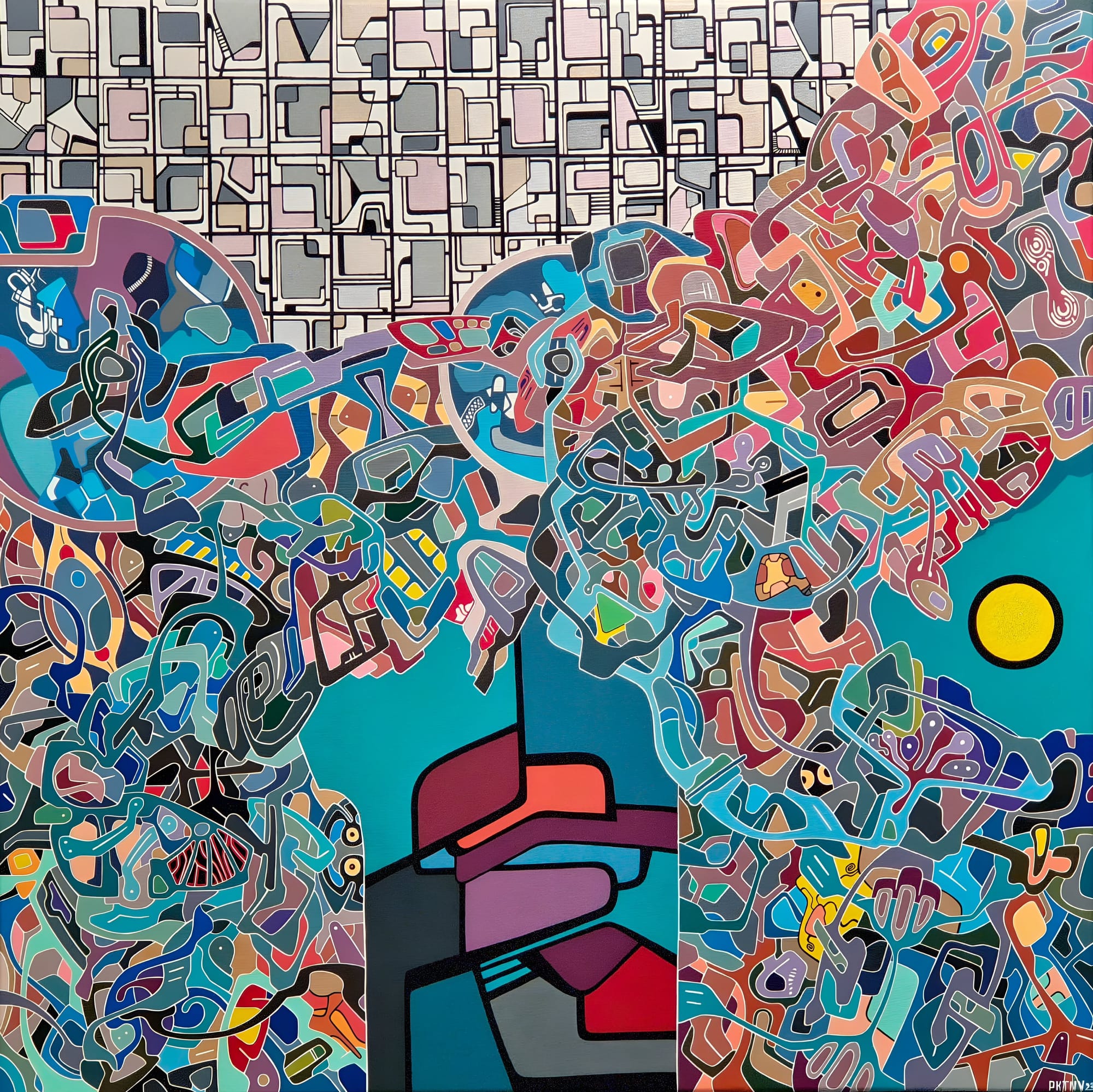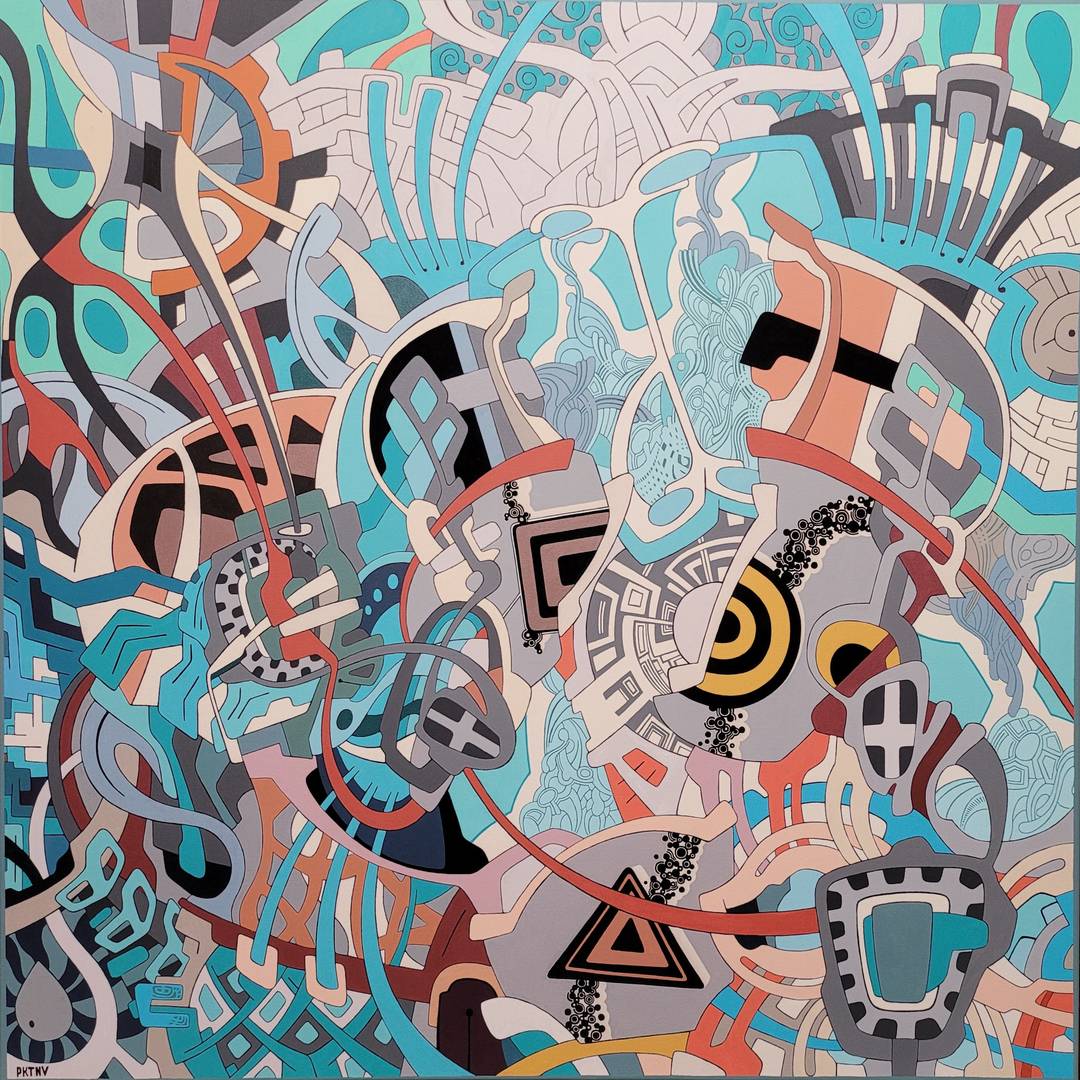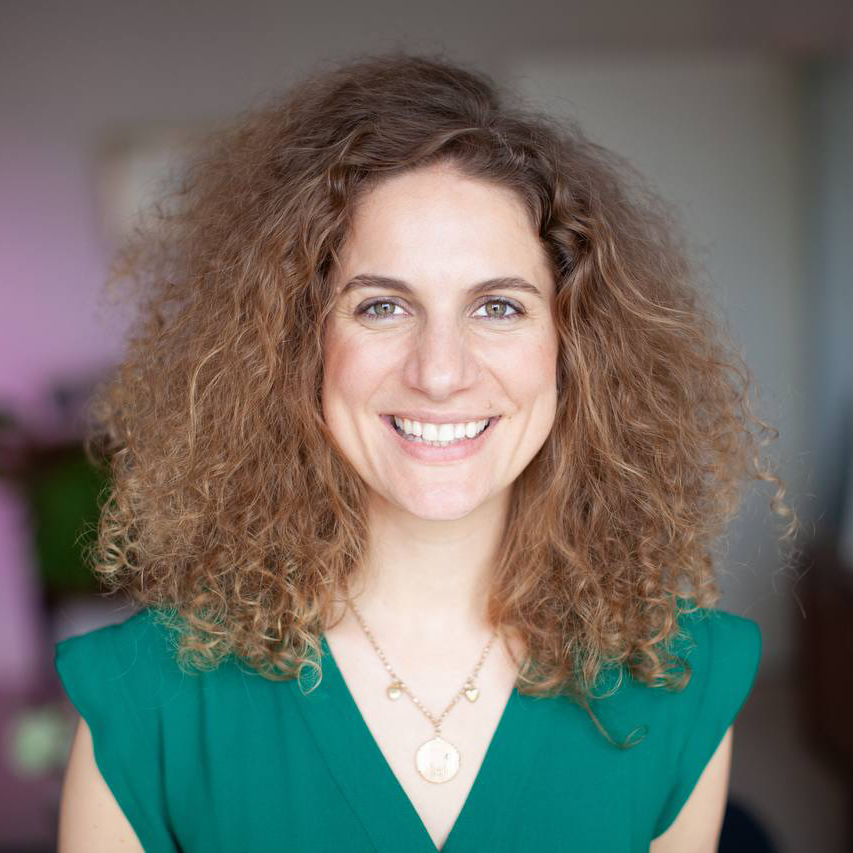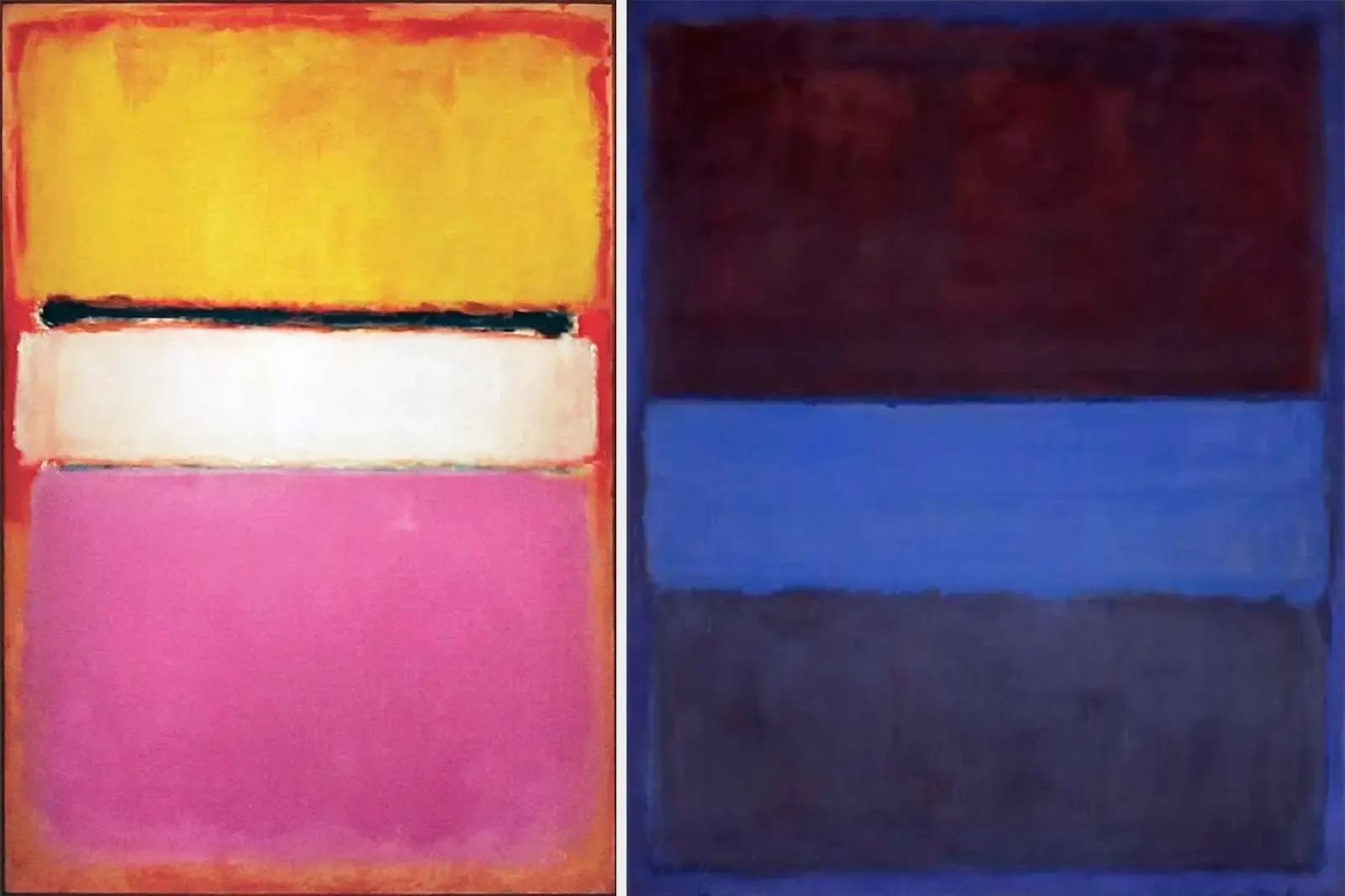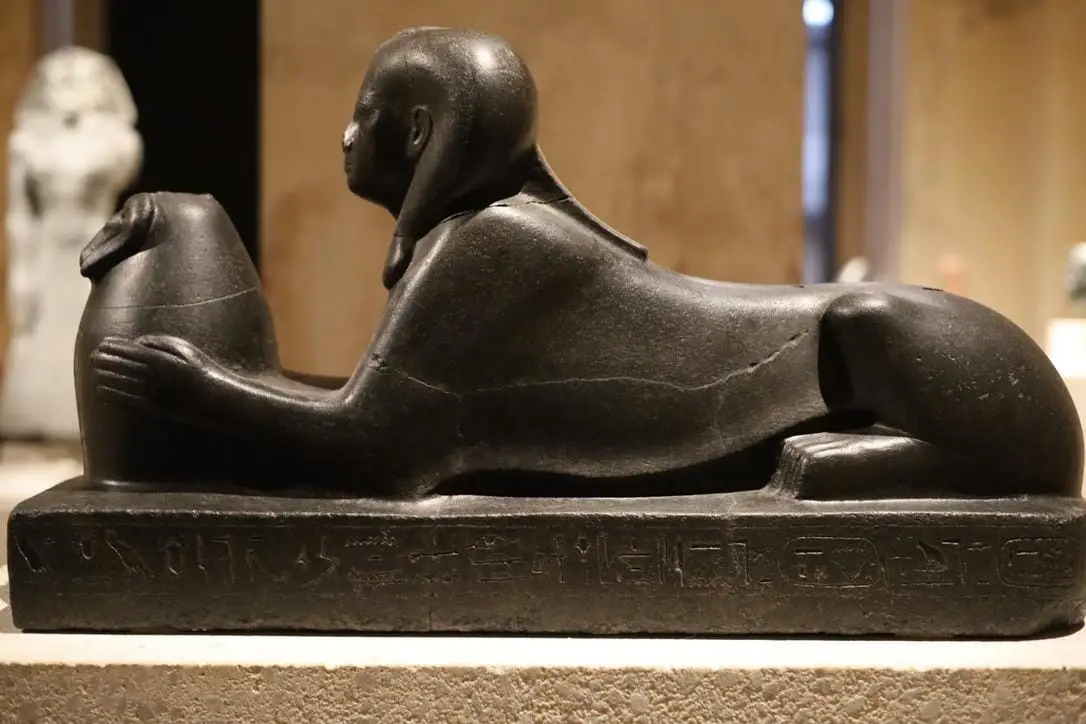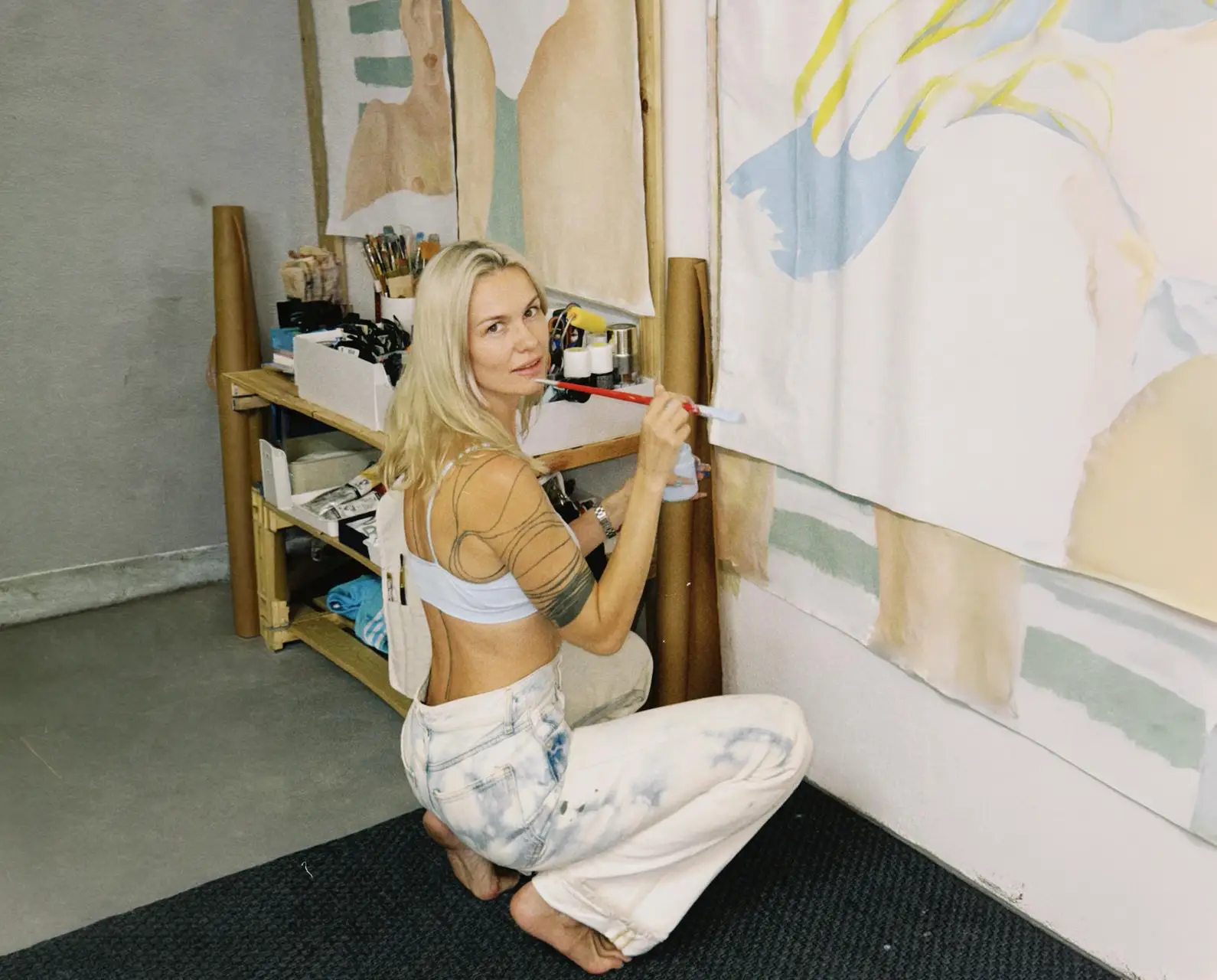Three questions to Eugene Pokutnev
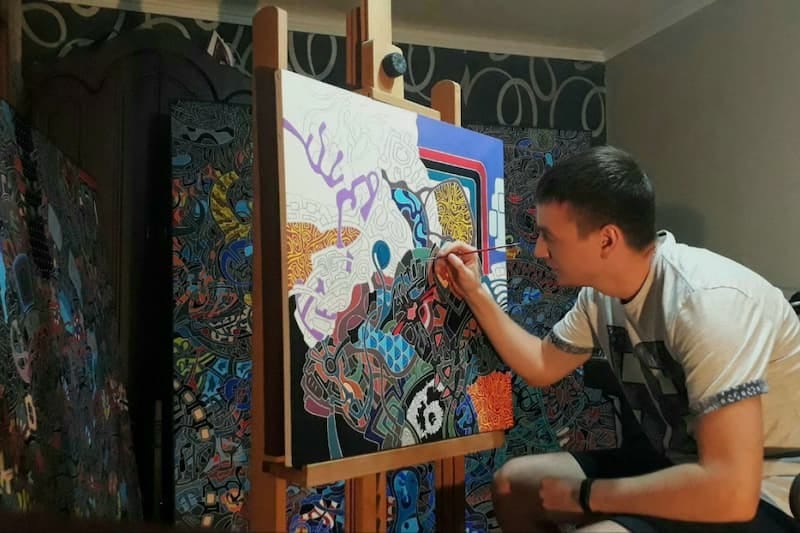
Eugene Pokutnev (b. 1989, Ukraine) is a contemporary artist based in Dnipro.
His works captivate viewers with their striking use of colour and the “vertigo effect” he achieves through the use of ‘jet-black’, a special Japanese paint known for its intense depth and texture. This paint is expensive, but it is totally worth it. Combined with Eugen’s particular line shapes and complex patterns, its velvet texture creates a 3D effect, making your brain think you are walking and swinging between different layers on the canvas. He masterfully plays with your attention through a particular composition, making your brain travel through and meditate on particular areas which hold the story Eugen is trying to tell.
Eugen’s dedication to his art is against all odds. He started doing sketches and painting complex patterns back in school. However, growing up in Dnipro, being an artist isn’t considered a profession. So he became a… policeman.
Nevertheless, fate is persistent. One day, he arrived at the burglary scene at the flat of a local entrepreneur. Several artworks were stolen. When Eugene was collecting evidence of the crime, his colleague showed the entrepreneur Eugene’s works. He was so impressed that he offered Eugene a salary so he could quit the police force and become an artist. It was 2015. Since then, Eugene has solely focused on art, taking his mastery to a totally new level.
How do you decide where to start and when to stop?
The beginning of work on a painting is most often intuitive. Emotions accumulate and the main idea is formed, which later receives visual expression on the canvas. Sometimes, it can be an inspiration that arises unexpectedly. The end of the work is often determined by a feeling of harmony, when you feel that there is nothing more to add or remove, and each element is in its place, creating the effect of movement in a static picture.
What are you afraid of?
An artist's fears can be diverse: fear of failure, fear of criticism, fear of a creative crisis. It’s important to acknowledge these fears, but not let them stop you. Every creative process has its challenges, and overcoming them is how you grow as an artist. But perhaps the biggest fear is when you have nothing to say on the canvas.
Which comes first: concept or technique?
This can vary from project to project. Sometimes, the concept forms the basis of the piece, and you work on the technique to realize it. Other times, new techniques can inspire the creation of new concepts. The key is to maintain a balance between the idea and the way it is realized.
Our top selection of Eugene’s works
